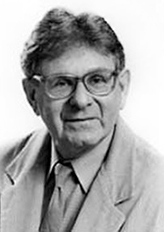

|

|
IN MEMORIAM
Sanford Hirshen
Professor of Architecture, Emeritus
UC Berkeley
1935 – 2013
Sanford (Sandy) Hirshen, architect and Professor Emeritus of Architecture at UC Berkeley, died on October 2, 2013 in Oakland. Born in 1935, he received a Bachelor of Architecture degree from Columbia in 1959. After working in several offices he, his wife Vivian and their two children, Richard and Julie, moved to California in 1964.
In 1966, Hirshen began teaching as a lecturer in the Department of Architecture at UC Berkeley, becoming a full professor in 1974 and serving as Chair of the Department (1982-1983) and Director of the Center for Planning and Development Research from 1991 to 1999. He retired from UC Berkeley in 1994 and was Director of the School of Architecture at the University of British Columbia from 1991 to 1999.
In 1964, after the passage of the Federal Economic Opportunity Act, designed to help America’s poor, California focused on its large farm worker community in the Central Valley who lived under appalling conditions. Dr. Paul O’Rourke, Director of the State’s OEO, who knew these conditions first hand, proposed that each county in California’s agricultural belt create new farm worker communities with housing, child care, and health care facilities. Through a group of legal activists fighting for farm worker rights whom Sandy was acquainted, O’Rourke asked him to develop prototype designs. Sandy believed strongly that architecture should serve not just the privileged segment of the society. In the years following he and Sim Van der Ryn built over twenty farmworker communities, in many cases over the protests of local county officials and ranchers, who did not want to call any attention to the miserable conditions that farmworker families lived in.
His success with the farm worker project brought him other clients with similar aims. His firm developed farm worker communities in Hawaii and numerous other poor communities. Best known for his early work in migrant community housing, and his later efforts in community design, Hirshen’s architectural projects included public housing, child development and education facilities, parks and playgrounds, health facilities, product design, architectural research, and international projects around the world. He was a fellow of both the AIA and the Royal Canadian Institute of Architects.
Sandy always had a vision and clear direction in the practice of architecture. He sought projects that were not well represented by many architects. Few firms at the time could afford to work on low-income housing, day-care centers or schools where budgets were low and which required a great deal of time and attention to cultural and social issues. But he took these on because he cared and because these projects could make a difference. He considered complex social issues as an intrinsic part of good design. His office spent a lot of time matching the needs of communities to the management organizations and government funders. To make these projects viable, his award winning architectural practice also worked with different cities’ offices to gain their support for solutions that would meet low budgets and still achieve architectural solutions that met the needs of the people being served.
Besides being a significant leader in the Architectural profession, he was also a beloved teacher who brought his ideals to the classroom. In his graduate studios, students met policy leaders in the community, management, and the future occupants of the projects to learn at first hand the kinds of discussions that take place to define the scope of a project. This kind of exercise taught the students to be open-minded and to not rely solely on their own ideas. Students found this approach refreshing and meaningful and several generations have followed his example of producing socially responsive architecture. His deep sense of ethics, unconcerned with fame, was embodied in his unpublished manuscript: “Toward an Architecture of Conscience,” a work for which he was awarded a Guggenheim Fellowship in 1984.
Emblematic of his belief in socially responsible architecture is the Sandy Hirshen Prize ($1,000) established by the professor upon his retirement to recognize students of the College of Environmental Design and their achievements in practicing socially responsible architecture. The prize is awarded annually to a CED student, alternating between undergraduates and graduates.
His quiet leadership as chair of the department was exemplary. He brought a sense of social and cultural importance to the students and faculty under his guidance.
Fair minded, liberal in the very best sense, he was seen by all as honest and trustworthy, always able to listen without his own frame of mind. The lightness of his being and natural kindness will remain an inspiration for many.
Mui Ho with
Jean-Paul Bourdier, Galen Cranz, Anthony Dubovsky, Clare C. Marcus, Lars Lerup, William di Napoli, Ray Lifchez, Richard Peters, Sim Van der Ryn